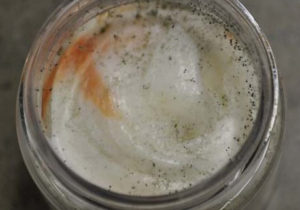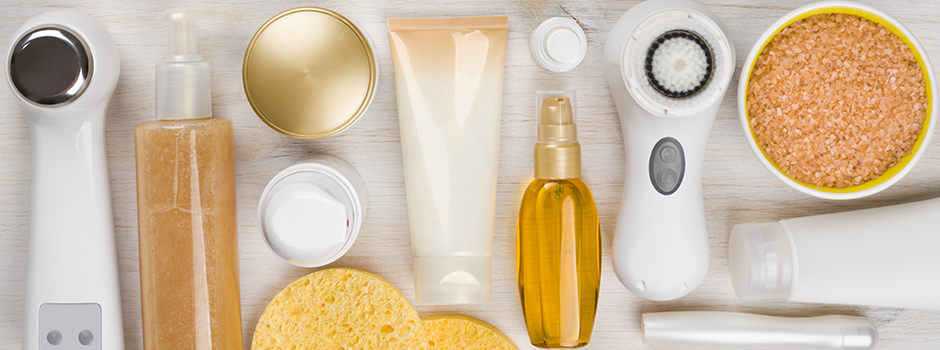Everyone uses personal care products, and we expect the products we buy to be safe. Whether a manufacturer is producing shampoo or makeup, preservatives are used to maintain the quality and extend the shelf-life of the product. This post outlines why some manufacturers may be reconsidering what preservatives to use in their products and the role antimicrobial effectiveness testing (preservation efficacy testing) plays in keeping personal care products safe.
Why Change a Preservative?
A variety of factors may lead manufacturers to reevaluate the preservatives used in personal care products. These drivers include concerns of some consumers, retailers and activist groups as well as potential regulatory action in the European Union and elsewhere. The safety of conventional preservatives such as parabens and formaldehyde-donors is well documented (1,2) but because of the market factors listed above, some manufacturers consider reformulating existing products or developing new ones that employ alternative strategies and ingredients to control microbial growth.
Reformulation is a time-consuming and expensive process, not a simple drop-in substitution of a different preservative (3). In additional to antimicrobial efficacy testing of the reformulated product, stability testing may also be needed. Conventional preservatives have been used safely for decades in personal care products (4) and their frequent use appears likely to continue.
Regulations
FDA states, “Cosmetic products are not expected to be aseptic; however, they must be completely free of high-virulence microbial pathogens, and the total number of microorganisms per gram must be low” (5). Preservatives may be employed to ensure that personal care products remain in this condition when used by the consumer.
Manufacturers perform microbiological risk assessments of their products and in some cases, such as for products with extreme pH or low water activity, addition of preservatives may not be deemed necessary (6). Regulations concerning cosmetics in the EU are contained in the Cosmetics Directive (7) that includes a list of approved preservatives in Annex V (8). Some manufacturers may employ “in-use” testing (9) to determine that their products are microbiologically safe when used by consumers.
 Antimicrobial Effectiveness Testing
Antimicrobial Effectiveness Testing
Antimicrobial effectiveness tests are used to show that personal care products are able to control the growth of contaminating microorganisms. The Personal Care Products Councils’ Microbiology Guidelines (9) contain guidelines and methods for evaluating the antimicrobial efficacy for a variety of product types including wipes, aqueous, and atypical products. Products such as sunscreens that are classified as drugs by the FDA are required to use USP methods for the determination of antimicrobial efficacy (10). Antimicrobial effectiveness test methods that have been developed by the manufacturer or by ISO (11) may also be used.
After determination of microbial content and preservative neutralization, antimicrobial efficacy tests employ challenge of the product with microorganisms from the following categories:
- Gram-positive cocci, fermentative and non-fermative Gram-negative rods,
- yeast,
- and mold (9).
Criteria for reduction of the challenge microorganisms are specified for the methods used. Regardless of the preservatives used in the formulation or the test methods utilized, manufacturers need to demonstrate preservation efficacy for susceptible personal care products. In light of the appearance of products with alternative preservation systems or even those which claim to be “preservative free,” FDA has issued the following guidance:
“FDA is concerned that cosmetic products that make a statement in labeling that the product is “green”, “natural”, “no parabens” and “no preservatives” may not be safe for consumers without appropriate safety testing. Companies and products that make such label statements should be given priority over traditionally manufactured cosmetics during inspection and sampling (5). “
Conclusions
Effective preservation of personal care products requires microbiological risk assessment and careful consideration of product formulation as well as antimicrobial effectiveness testing for susceptible products. Industry and regulatory agencies continue to make sure that personal care products are both safe and effective. Both conventional and alternative strategies and ingredients for preservation are being employed to ensure the microbiological safety of the personal care products that consumers use and rely on.
Visit the Personal Care Products Council online store to purchase the PCPC 2016 Microbiology Guidelines.
Biography
 John F. Krowka, Ph.D., served as the Senior Environmental Scientist for the Personal Care Products Council until 2013 when he became Senior Microbiologist for the organization. Prior to PCPC, John worked as a Research Immunologist and Research Scientist, and served as Chief Science Officer and Vice President of Research and Development for Bio-Tech Imaging, Inc. John has contributed to more than 50 academic and industry publications throughout his career. Since retiring from PCPC in December 2016, John has worked as a Cosmetic Microbiology Consultant and owner of Kensho Farms, an organic produce farm in Boonsboro, MD.
John F. Krowka, Ph.D., served as the Senior Environmental Scientist for the Personal Care Products Council until 2013 when he became Senior Microbiologist for the organization. Prior to PCPC, John worked as a Research Immunologist and Research Scientist, and served as Chief Science Officer and Vice President of Research and Development for Bio-Tech Imaging, Inc. John has contributed to more than 50 academic and industry publications throughout his career. Since retiring from PCPC in December 2016, John has worked as a Cosmetic Microbiology Consultant and owner of Kensho Farms, an organic produce farm in Boonsboro, MD.
References
- Personal Care Products Council. 2016. Preservatives. http://www.cosmeticsinfo.org/search/node/preservatives
- Cosmetic Ingredient Review. 2016. http://www.cir-safety.org/ingredients
- Personal Care Products Council. 2016. Product Reformulation. http://www.cosmeticsinfo.org/product-reformulation
- Steinberg DC. 2016. Frequency of Preservative Use Update Through 2014. Cosmetics & Toiletries. February. http://www.cosmeticsandtoiletries.com/regulatory/region/northamerica/Frequency-of-Preservative-Use-Update-Through-2014-367684531.html
- S. Food and Drug Administration. 2016. Compliance Program Guidance Manual. http://www.fda.gov/downloads/cosmetics/guidanceregulation/guidancedocuments/ucm208412.pdf
- 2010. ISO 29621 Cosmetics — Microbiology — Guidelines for the risk assessment and identification of microbiologically low-risk products. www.iso.org
- European Commission. 2017. Legislation. https://ec.europa.eu/growth/sectors/cosmetics/legislation_en
- European Commission. 2016. Annex V. List of Preservatives Allowed in Cosmetic Products. http://ec.europa.eu/growth/tools-databases/cosing/pdf/COSING_Annex%20V_v2.pdf
- Krowka, JF and Jonas BA (eds). 2016. Microbiology Guidelines. Personal Care Products Council, Washington. DC.
- US Pharmacopeia and National Formulary. 2016. USP 40-NF35. <51> Antimicrobial Effectiveness Testing. USP. Rockville, MD
- 2012. ISO 11930. Cosmetics — Microbiology — Evaluation of the antimicrobial protection of a cosmetic product. Www.iso.org .






It’s interesting to know that according to FDA, cosmetic products that label itself as paraben-free and preservatives-free should be prioritized in microbial testing. This is to ensure that the products are efficient enough to control the growth of contaminating microorganisms despite their natural ingredients. My friend is planning to open her own lip tint business in town by the end of this year. Perhaps it would be wise if she starts looking for a reputable microbial testing facility that can check her products before she releases them. Thanks for this!